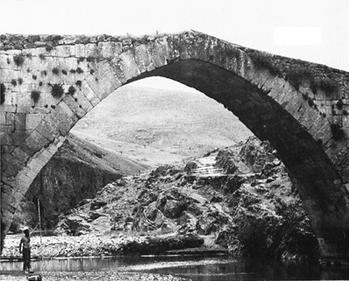Bridges are probably something that most modern people take for granted. It seems like bridges are always present in areas that may otherwise be inaccessible, but that hasn’t always been the case. Due to their usefulness, bridges emerged sometime during the rise of the first civilizations in Ancient Mesopotamia. These early bridges were simple structures made from wooden logs, stones, and dirt, which means bridges from this time period did not survive. (Ambien)
With a few exceptions, the oldest existing bridges in the world were created by the ancient Romans, who are considered the greatest bridge builders of antiquity. A majority of the bridges on this list are still used today and have become historical landmarks.
10. Karamagara Bridge
Year Built: c.5th or 6th century CE
Location: Cappadocia, Turkey
Builder: Unknown
Still in Use: No
photo source: Wikimedia Commons
The Karamagara Bridge was built sometime in the 5th or 6th century during the era of the Byzantine Empire. The bridge consisted of a single pointed arch and is possibly the earliest known example of a pointed arch bridge.
Karamagara Bridge was part of larger Roman road that led to the city of Melitene in the Eastern Anatolia region of Turkey. The bridge is no longer usable today because it was submerged after the completion of the Keban Dam in 1975. Before this, Karamagara Bridge was examined by the Middle East Technical University of Ankara.
9. Bridge near Limyra
Year Built: Unknown – possibly c.3rd century CE
Location: Lycia, Turkey
Builder: Unknown
Still in Use: No
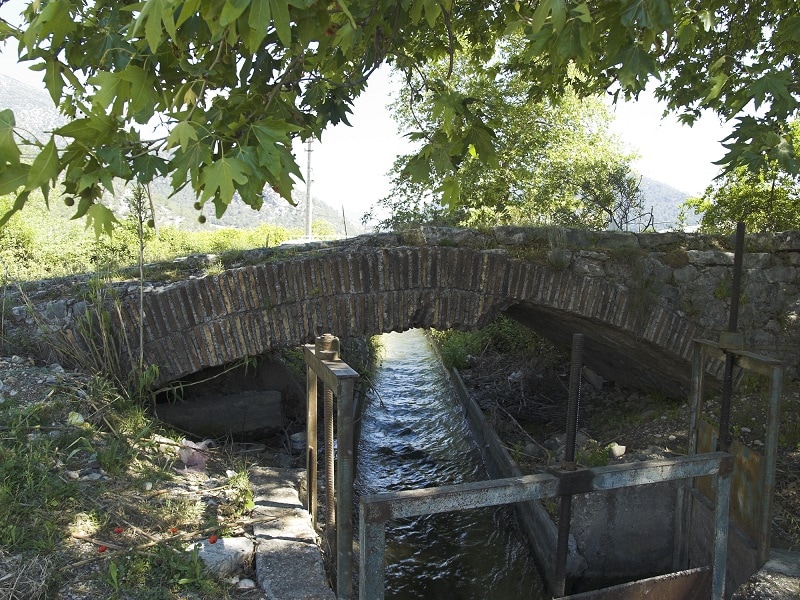
The Bridge near Limyra is a relatively unknown, yet unique stone bridge – it is believed to be one of the oldest segmented arch bridges in the world. The bridge is located near the ancient city of Limyra and is the largest civil engineering structure of antiquity in the region.
The way the arches of the bridge were built gives the bridge an unusually flat profile, which was unique in Roman engineering at the time. Due to this fact and the lack of comparable structures, it has been hard to date the construction of the bride, which is estimated to be sometime in the 3rd century. Additionally, very little scientific research has been conducted on the bridge and there is no information about the bridge from ancient sources.
8. Band-e Kaisar
Year Built: c.260 – 270 CE
Location: Shushtar, Iran
Builder: Roman engineers and Shapur I
Still in Use: No

The Band-e Kaisar of Bridge of Valerian was a Roman stone arch bridge built in what is now Shushtar, Iran. At the time it was built, around 260 – 270 CE, the bridge was combined with a dam — making Band-e Kaisar the first of its kind in the country. The bridge/dam was the most eastern Roman bridge/dam, lying deep in Persian territory.
According to Persian history, Band-e Kaisar was named after the Roman Emperor Valerian, who was captured with his entire army by the Sassanid ruler Shapur I. The dam bridge was used until the late 19th century and today Band-e Kaisar is part of a larger UNESCO World Heritage Site in the area.
7. Cendere Bridge
Year Built: c.200 CE
Location: Adiyaman Province, Turkey
Builder: Roman Legio XVI Gallica
Still in Use: Yes
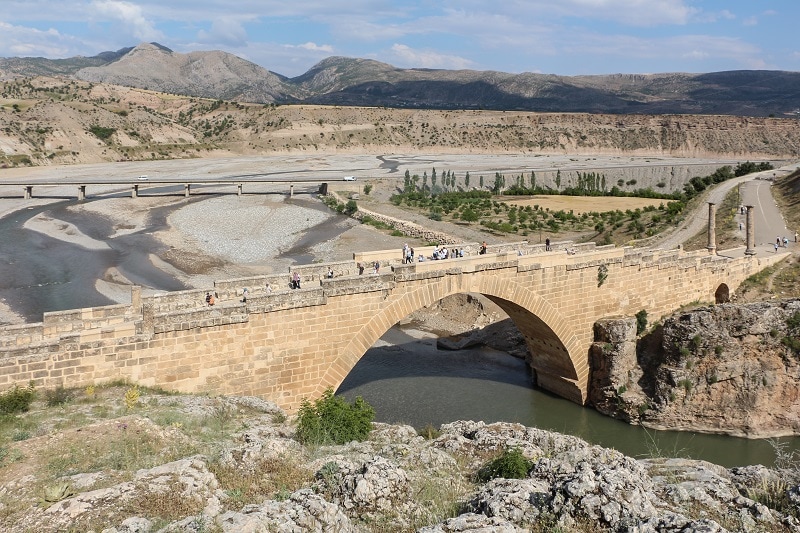
The Cendere Bridge (also known as Severan Bride or Septimius Severus Bridge) is a Roman bridge dating from the late Imperial Roman period. It is located near the ancient city of Arsameia in southeastern Turkey. While an older bridge may have existed in the same spot, the current Cendere Bridge is dated to around 200 BCE.
A legion of the Imperial Roman army, Legio XVI Gallica, is credited with building the bride so they could begin a war with Parthia. Four Corinthian-style columns were added to bridge n honor of the Roman Emperor Lucius Septimius Severus (193–211), his second wife Julia Domna, and their sons Caracalla and Publius Septimius Geta.
The Cendere Bridge is now apart of one of the most important national parks in Turkey, which is a UNESCO World Heritage Site.
6. Ponte Sant’Angelo
Year Built: 134 CE
Location: Rome, Italy
Builder: Gian Lorenzo Bernini – commissioned by Roman Emperor Hadrian
Still in Use: Yes as a pedestrian bridge
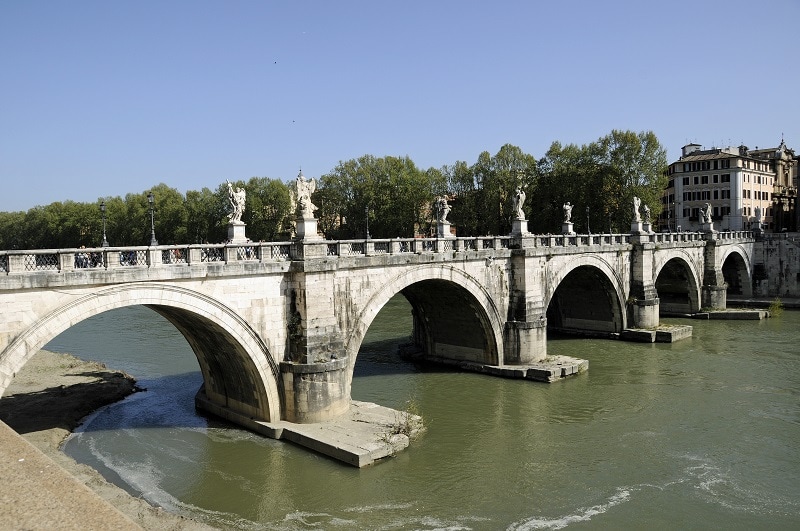
Ponte Sant’Angelo is one of the most famous Roman bridges in the world. The bridge was commissioned by the Roman Emperor Hadrian to span the Tiber River from the city center in Rome to his newly constructed mausoleum, which is now known as the Castel Sant’Angelo. In the past, the bridge was called Pons Aelius, meaning the Bridge of Hadrian.
Pons Sant’Angelo was designed by the famous Italian sculptor and architect Gian Lorenzo Bernini and it was completed in 134 CE. The bridge’s most distinctive feature are the numerous angel statues standing on the bridge’s pillars. Today, the bridge is solely used by pedestrians and provides a scenic view of the Tiber River and the Castel Sant’Angelo.
5. Alcántara Bridge
Year Built: 104 – 106 CE
Location: Alcántara, Spain
Builder: Caius Julius Lacer – by order of Roman Emperor Trajan
Still in Use: Yes
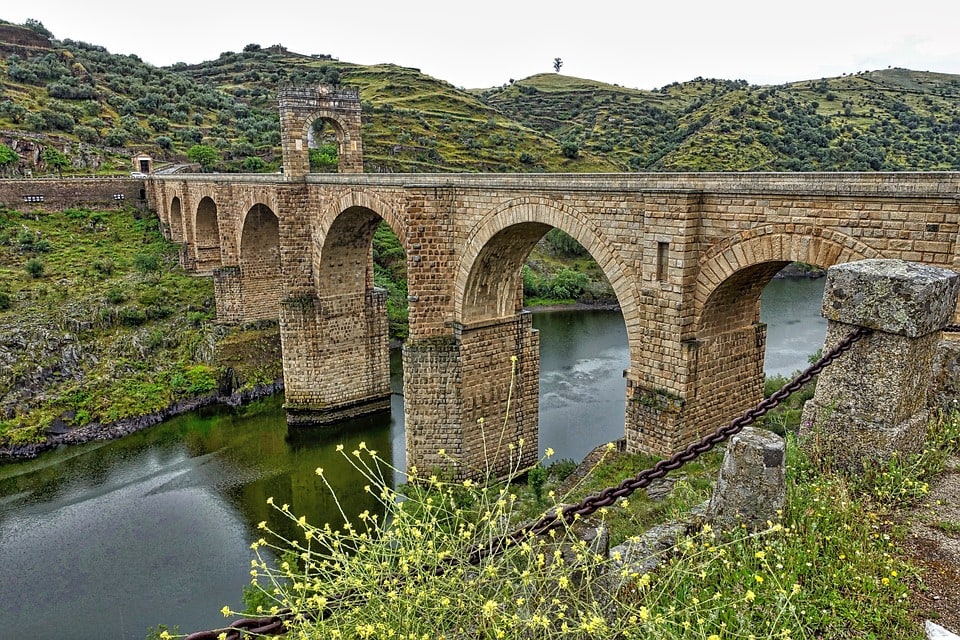
Alcántara Bridge is another Imperial Roman bridge that still exists today. The stone arch bridge was built over the Tagus River after the Roman Emperor Trajan issued an order in 98 CE. Construction of Alcántara Bridge began in 104 CE and ended two years later.
Although the bridge is currently in good condition, it has had to be repaired several times throughout its history. Most of the bridge’s damage was due to wars rather than the elements. Various parts of Alcántara Bridge were destroyed at different time periods until the main pillars were completely repaired in 1969.
4. Pons Fabricius
Year Built: 62 BCE
Location: Rome, Italy
Builder: Lucius Fabricius
Still in Use: Yes
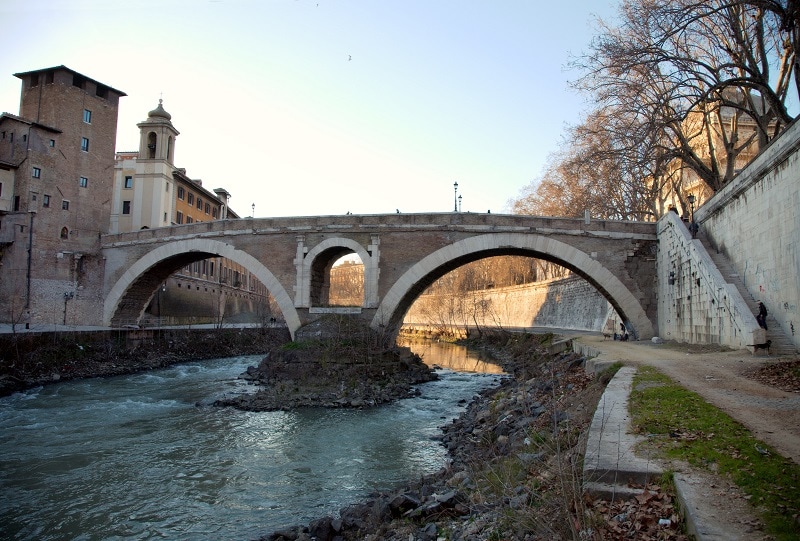
The Pons Fabricius or Ponte dei Quattro Capi, is the oldest existing Roman bride in its original state. It was built in 62 BCE and spans half of the Tiber River. Pons Fabricius is 62 m (203 ft) long and 5.5 m (18 ft) in height.
According to Dio Cassius – a Roman statesman and historian – Pons Fabricius was built to replace a previous wooden bridge that had burned down. The bridge is named after Lucius Fabricius, the curator of the roads at the time. Despite its old age, the bridge has remained completely intact since it went up in 62 BCE and has remained in continuous use.
3. Bridge Over River Meles (Caravan Bridge)
Year Built: c.850 BCE
Location: Izmir, Turkey
Builder: Unknown
Still in Use: Yes
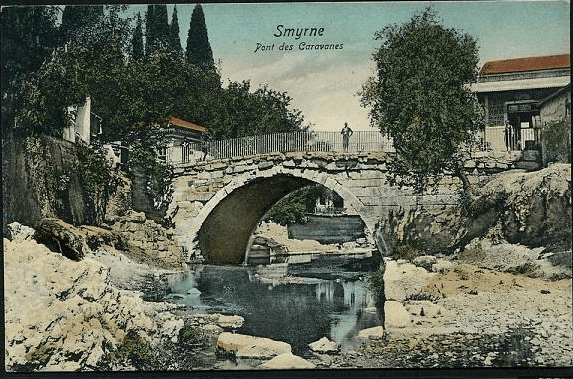
Although there are a few bridges that are much older, according to the Guinness Book of World Records, the bridge over the river Meles (commonly called Caravan Bridge) is the oldest datable bride in the world still in use. This ancient arched stone slab bridge was built sometime around 850 BCE in Izmir, Turkey. At one point, the Caravan Bridge served as the checked entry point into the city of Izmir.
The river Meles is known for being the birthplace of the legendary Ancient Greek author Homer. The river and the Caravan bridge were prominently featured in Homer’s work.
2. Tarr Steps
Year Built: Unknown, possibly c.1000 BCE
Location: Exmoor National Park, Somerset, England
Builder: Unknown (according to legend built by the Devil)
Still in Use: Yes
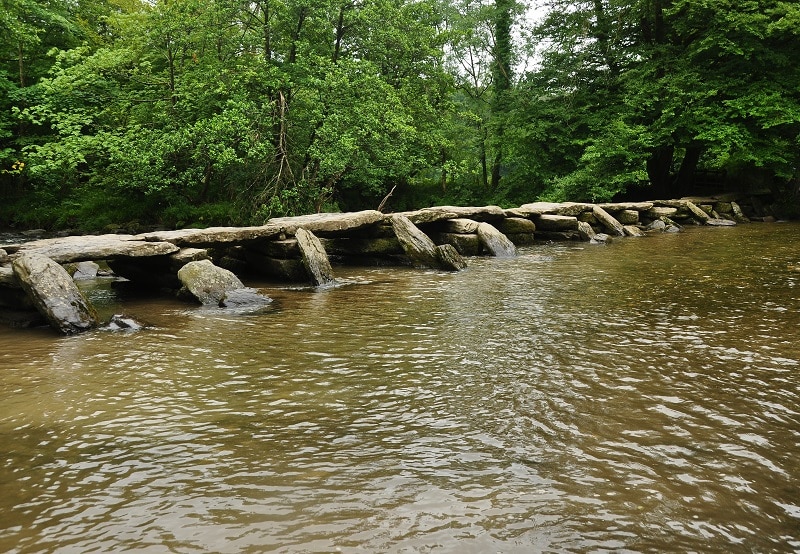
The Tarr Steps are an ancient clapper bridge (bridge form mostly found in the moors of Devon, England) located across the River Barle in Exmoor National Park in Somerset, England. No one knows for sure how old the bride is but the Tarr Steps could date back to at least 1000 BCE.
The Tarr Steps consist of 17 giant slabs (total of 180 feet long) and are considered the best example of a clapper bridge. According to local legend, the Tarr Steps were built by the Devil so he could sunbathe on the stones. The bridge has been damaged in recent years by flood waters but has been rebuilt.
1. Arkadiko Bridge
Year Built: c.1300 – 1190 BCE
Location: Argolis, Greece
Builder: Mycenaean Greeks
Still in Use: Yes
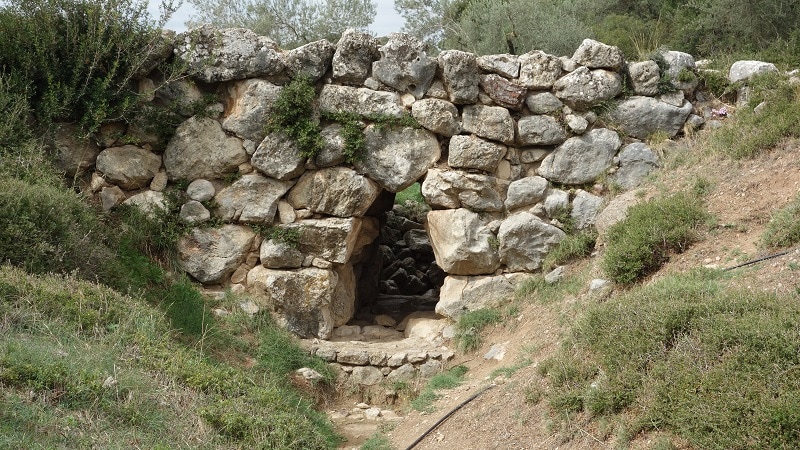
The Arkadiko Bridge, also known as the Kazarma Bridge, is believed to be the oldest existing bridge in the world. It is an arch bridge and one of the oldest of this type still used by the local population. In Mycenaean (last phase of the Greek Bronze Age from 1600 – 1100 BCE) times, the Arkadiko Bridge served as a highway between the cities of Tiryns and Epidauros.
The Arkadiko Bridge was built sometime around 1300 – 1190 BCE and was part of a larger highway in the area. There are three other corbel arch bridges near Arkadiko, all similar in design and age.
”OTHER



